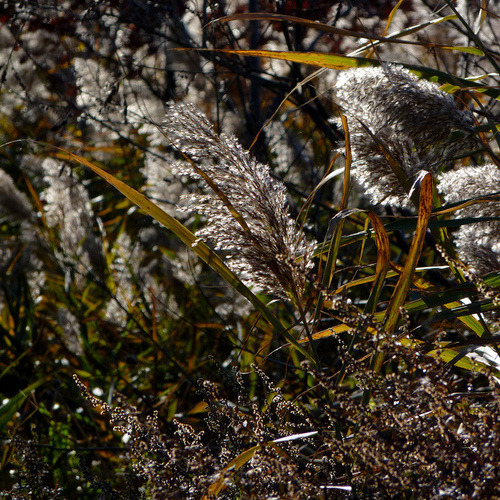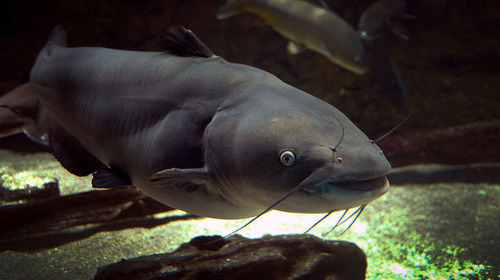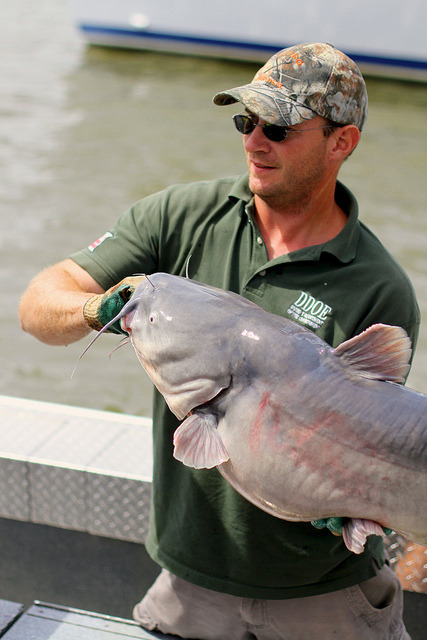Blue Cats
As long as humans have lived throughout the Chesapeake, we’ve altered our environment. The Indians used controlled burns to reduce understory coverage below the soaring canopy and between massive trunks to allow for easier hunting. The first colonists slashed and burned their fields to cultivate tobacco, growing the seedlings in mounded hillocks around the charred stumps that were left behind. The 19th century saw the Bay’s bottom completely reshaped as thousands of years of accrued oyster reefs were demolished by the teeth of the dredges, pulled by sailing skipjacks.
Today, our changes to our environment are ever more obvious, and the footprint of their impact is as wide, deep, and extensive as the Chesapeake itself. The poster child is Phragmite australis, an invasive reed that uses disturbed marshes as its entree into an ecosystem, which has proliferated throughout the Chesapeake as humans have turned over swampland to create docks, lawns, and bulkheads. Now it waves gaily, a fronded impostor, welcoming passengers crossing the Bay Bridge to the Eastern Shore where its choking roots have stifled hundreds of thousands of miles of native marsh grasses.

Sure is pretty, though.
Below the dun-colored waves of the Bay are other non-native bullies, who arrived as released pets, or in ballast-water, or sometimes even on purpose. Snakeheads, the east Asian fish famously behind the draining of a Maryland pond in a failed attempt at eradication, are the ugly, snaggle-toothed face of the Chespeake’s aquatic invasives. Released into the pond by a man who had purchased a live pair in a New York Asian market where they were being sold for food, dramatic attempts at wiping out the snakehead proved fruitless. To date, 40 snakeheads have now been found in the Potomac River. There’s even an annual “snakehead catching contest” run by the Maryland Department of Natural Resources to encourage management of the species through recreational fishing. Snakehead control is also being promoted through the same thinking that brought them to the Bay in the first place: as a delicacy. Apparently, they make for some good eating.

Not all aquatic invasive species look so dramatically alien, however. Many can pass as native Chesapeake creatures, so completely at home are they in the Bay’s brackish environment. The blue catfish is an especially good (bewhiskered) example. They look and live very similarly to their relative, the white catfish, that evolved in the deeper tributaries of the Chesapeake. But at their largest, whites cats can grow up to 4 feet and weigh 50 pounds- which seems like a real Bay bruiser, until you compare them to the blue catfish whose maximum size tops out at 5.5 feet and scale-crushing weight of 100 pounds.

A fish that size needs an enormous amount of sustenance to maintain its energy as it silently cruises along the sedimented channels of the Bay’s bottom, consuming molluscs, insects, crabs, and fish with a ravenous appetite. Blue cats are such voracious predators, in fact, that they’re classified as “apex” predators- like wolves or lions. But in their native Mississippi River environment, they are surrounded by prey that has evolved defenses against the barbed behemoths. Here in the Chesapeake, however, these year-round residents hoover up humbler species, growing more fearless as they gain size and mass. Their endless consumption has hit certain Chesapeake fish hard- like shad, whose population has already suffered a major decline since the 19th century due to river damming, pollution, and overfishing.

A monster blue catfish, caught in the Potomac by a staff member from the District Department of the Environment.
Believe it or not, the blue catfish was purposefully introduced to the Chesapeake by the Virginia Department of Game and Inland Fisheries in 1977 to encourage recreational fishing. 300,000 small blue cats were released in the James, and over the next few years, several more nearby river systems were stocked. The blues took to their new environments with ease, quickly dominating the food chain with gusto. Their population increase was swift and expansive- within four decades, they’ve explosively reproduced, making up 75% of the fish in Chesapeake rivers like the Rappahannock and the James.
Blue catfish are monitored in Virginia through electrofishing.
Today the blue catfish makes up just one of the dozens of invasive species making their expanding mark of the Chesapeake’s forests and marshes, streams and channels. Some you can catch and control, some you monitor, and others you just watch as they silently replace the animals and plants that were once the trademark features of our environment. The Chesapeake has always been inarguably a changing land- but we residents of the Bay proper have ensured, since the first days that humans explored the piney woods along the shoreline, that the transformation would be continuous and complete. Who knows if hundred years from now, will we recognize the water we swam in, the fish that swim in it, or the land surrounding it? Once the cat’s out of the bag, the future is anything but clear.
For more on the blue catfish:
Chesapeake Bay Program- blue catfish field guide
Chesapeake Bay Journal- Blue catfish boom threatens region’s river ecosystems
